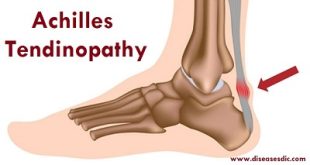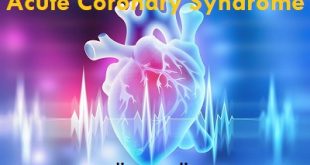Definition
Alopecia areata, also known as spot baldness, is an autoimmune disease in which hair is lost from some or all areas of the body. Usually, the hair loss occurs from the scalp due to the body’s failure to recognize its own body cells and subsequent destruction of its own tissue as if it were an invader.
It usually causes small, coin-sized, round patches of baldness on the scalp, although hair elsewhere such as the beard, eyebrows, eyelashes, body, and limbs can be affected. Occasionally it can involve the whole scalp (alopecia totalis) or even the entire body and scalp (alopecia universalis). It is not possible to predict how much hair will be lost. Regrowth of hair in typical alopecia areata is usually over a period of months or sometimes years, but cannot be guaranteed. The hair sometimes regrows white, at least in the first instance. Further hair loss is not uncommon. In alopecia totalis and alopecia universalis, the likelihood of total regrowth is less.
Epidemiology
Androgenic alopecia is the most common cause of hair loss in males. The overall incidence in Caucasian men may be as high as 96% or more, but the exact prevalence is unknown. Estimates should include the ages for which the estimate has been generated and the degree of hair loss. Caucasian men aged 20 to 40 years have bitemporal recession in 62% of cases. In men aged 18 to 49 years, the incidence of hair loss measured as type III or greater on the well-accepted Hamilton-Norwood hair loss rating scale is estimated to be at least 42%. Within the ages 40 to 49 years, however, 53% are estimated to have moderate-to-extensive hair loss.
Types of alopecia areata
Alopecia areata (patchy)
Alopecia areata (patchy) is the form with one or more coin-sized (usually round or oval) patches on the scalp or other places on the body that grow hair. This type may convert into either alopecia totalis (hair loss across the entire scalp) or alopecia universalis (hair loss across the entire body), but most commonly it remains patchy.
Persistent patchy alopecia areata
Persistent patchy alopecia areata is characterized by patchy scalp hair loss that continues over a long period of time without ever developing into extensive alopecia areata such as totalis or universalis.
Alopecia totalis
Alopecia totalis results in hair loss across the entire scalp.
Alopecia universalis
Alopecia universalis is more advanced than alopecia totalis. This type results in hair loss across the entire scalp and face (including eyebrows and eyelashes), plus the rest of the body (including pubic hair).
Other forms of alopecia areata
Diffuse alopecia areata
Diffuse alopecia areata results in sudden and unexpected thinning of the hair all over the scalp. It can be hard to diagnose because it looks a lot like other forms of hair loss such as telogen effluvium or male or female pattern hair loss.
Ophiasis alopecia
Ophiasis alopecia areata has a unique pattern of hair loss, which includes the sides and lower back of the scalp (called the occipital region) in the shape of a band. Ophiasis alopecia areata can be more difficult to treat because it does not respond as quickly to medication.
Risk factors
Genetics: If your parents have the history of alopecia or any atopic disorder, you are at a high risk of suffering from Alopecia Areata. The family history of autoimmune disorders like SLE, RA, etc. also elevate the risk of developing Alopecia during your lifetime.
Hair care and styling: Use of the harsh chemical through shampoos, hair coloring products or hair styling habits like using hair dryers can also increase the likelihood of Alopecia since these are found to be stressful to your hair & scalp.
Stress: Any exposure to unusual stressful factors like extreme weather conditions, etc. Emotional stress leading to use of anti-depressants or other medication increase the probability of getting Alopecia disorder.
Vaccination: Sometimes, particularly in children Alopecia is seen to develop post vaccination.
Viral infections: Viral infections can trigger alopecia areata.
Vit D deficiency: A study confirms that individuals with low levels of Vit D are at high risk of developing alopecia.
Causes of alopecia areata
- So tiny cells in the immune system, called T cells, gather around the base of a hair follicle and try to kill it. This causes the hair to fall out. But at some point, the immune attack must come to an end and the hair grows back.
- Alopecia areata can be triggered by a recent illness, like a viral infection, or by taking certain medications for other medical conditions. Some people can link the onset of their alopecia to a stressful life event, but many can’t. Sometimes it seems to run in families and it has been known to come on in twins at the same time. More often than not, no cause is found at all.
- If you have alopecia areata you also have a slightly higher-than-average chance of developing other autoimmune diseases such as thyroid disorders, pernicious anemia and vitiligo. Your doctor may wish to check for these if there are any signs of them along with the hair loss.
Symptoms
There are different Alopecia causes, but there are certain common signs and symptoms which can lead you to find an Alopecia Areata cure.
- Sudden loss of hair is defined, usually small round patches in the beginning. Coin-sized patches of hair begin to fall.
- Excessive hair-fall even on touch, or clumps of hair left on the pillow or in the shower.
- Bald patches spread rapidly, and hair growth may be affected in other body areas including eyelashes and beard, for example.
- A burning sensation or crawling sensation or itching on the scalp or the body area before hair loss.
- Chronic or extensive alopecia sometimes can be associated with pitting of nails.
Complications of alopecia areata
- Alopecia areata patients are at risk for psychosocial consequences of their disease, such as depression and anxiety.
- They should be assessed for atopy, vitiligo, thyroid disease, and other autoimmune conditions.
Diagnosis and test
Generally, dermatologist treats alopecia areata. They are doctors who specialize in the diagnosis and treatment of problems related to skin, its structure, functions, and diseases, as well as its peripheral (nails, hair, sweat glands). Hair loss alone should not be considered to diagnose alopecia areata. There are other types of diseases as well that might cause hair to fall out similar to alopecia areata
The typical diagnosis procedure includes Hair analysis and Blood tests
Hair analysis
- Doctors might examine a few hair samples using a microscope
- Doctors might also perform a scalp biopsy to ensure that hair loss is not due to other conditions including fungal infections
- As part of scalp biopsy, doctors might even remove a small piece of skin on the scalp for a more detailed analysis
Blood tests
- If other autoimmune conditions are suspected for hair, then doctors might suggest blood tests to be done
- Doctors would like to test for the presence of one or more abnormal antibodies because if these autoantibodies are found in the blood, it confirms that there is an autoimmune disorder in the body
- There are other blood tests that can be of help to rule out hair loss due to other conditions like the antinuclear antibody test, testing the iron levels and thyroid hormones test
Treatment and medications
There is not yet any reliable cure for alopecia areata and other forms of autoimmune hair loss. Because spontaneous regrowth is common in alopecia areata, and research has often been of poor quality, the effectiveness of reported treatments is mostly unknown.
Topical treatments
Several topical treatments used for alopecia areata are reported to result in temporary improvement in some people. Their role and efficacy are unknown. The hair may fall out when they are stopped. These include:
- Potent or ultrapotent topical steroids
- Minoxidil solution or foam
- Dithranol (anthralin) ointment
Intralesional corticosteroid injections
Injections of triamcinolone acetonide 2.5–10 mg/ml into patchy scalp, beard or eyebrow alopecia areata may speed up regrowth of hair. Its effect is temporary. If bald patches reappear, they can be reinjected.
Systemic corticosteroids
Oral and pulse intravenous steroids in high dose can lead to temporary regrowth of hair. Most physicians agree that long-term systemic steroid treatment is not justified because of potential and actual adverse effects.
Immunotherapy
The sensitizing agent’s diphenylcyclopropenone (diphencyprone) and dinitrochlorobenzene provoke contact allergic dermatitis in treated areas. These sensitizers can be reapplied once weekly to bald areas on the scalp. The resultant dermatitis is irritating and may be unsightly. It is often accompanied by a swollen lymph gland.
Other treatments
A combination of the lipid-lowering agent’s simvastatin and ezetimibe (which have immunomodulating effects) has been reported to be effective.
There is no convincing data to support the use of methotrexate, sulfasalazine, azathioprine, ciclosporin or phototherapy.
JAK inhibitors
Several patients with severe alopecia areata have had improvement when treated with oral tofacitinib or oral ruxolitinib, which are Janus kinase (JAK) inhibitors. It is thought they may act by blocking interleukin (IL)-15 signaling. Watch out for the results of clinical trials of these biologic medicines.
Prevention of alopecia areata
The condition cannot be prevented or avoided. The cause is unknown and varies by person. Alopecia areata is not tied to stress, as some people believe. Some people have a family history of alopecia areata. Having a family member with alopecia areata and another immune system disease can raise your risk of having it. Other immune system diseases include type 1 diabetes, rheumatoid arthritis, thyroid disease, lupus, Addison’s disease, and atopic dermatitis. It is rare for a parent to pass the condition onto a child.
 Diseases Treatments Dictionary This is complete solution to read all diseases treatments Which covers Prevention, Causes, Symptoms, Medical Terms, Drugs, Prescription, Natural Remedies with cures and Treatments. Most of the common diseases were listed in names, split with categories.
Diseases Treatments Dictionary This is complete solution to read all diseases treatments Which covers Prevention, Causes, Symptoms, Medical Terms, Drugs, Prescription, Natural Remedies with cures and Treatments. Most of the common diseases were listed in names, split with categories.








Hi! I have a problem of balding too, and yes my father has, now I’m worried I didn’t consulted, I’m just using topical treatment. Now after reading this I’m afraid,
better consult a doctor.
thanks for this information,I am having exactly the same issue here, but don’t know how to go about it.once again am good
I am having the same issue here, thanks for the piece of information
Thank you so much for the educative information about this condition.
However, the possible Medical laboratory investigation is not clear enough to me.
As a researcher in Medical Surgical Nursing Sciences I do appreciate your efforts.
Well done…
Victor Obakpolo;FWACN PhD
where is the treatment ?? i cant found the vaccination or tteatment
Please read in the post.
Can this be cured
It can be cured only via hair transplantation.
I want to know about proper treatment of alopecia areata .
Please read it in the treatment section of the post.